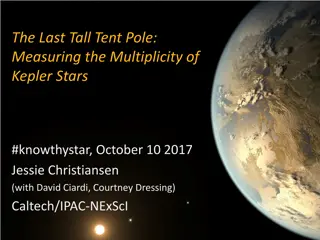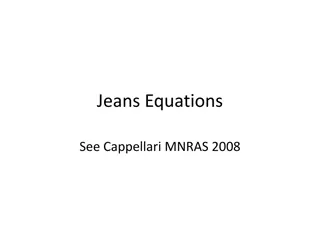Journey of a Star: Stellar Evolution Explained
Explore the stages of stellar evolution, from the birth of a protostar in a nebula to the dramatic transformations leading to the formation of red giants, white dwarfs, and black dwarfs. Understand phenomena like gravitational collapse, temperature changes, radiative processes, and the Chandrasekhar limit that shapes the life cycle of stars. Experience the awe-inspiring cosmic journey through detailed descriptions and captivating images.
Download Presentation

Please find below an Image/Link to download the presentation.
The content on the website is provided AS IS for your information and personal use only. It may not be sold, licensed, or shared on other websites without obtaining consent from the author.If you encounter any issues during the download, it is possible that the publisher has removed the file from their server.
You are allowed to download the files provided on this website for personal or commercial use, subject to the condition that they are used lawfully. All files are the property of their respective owners.
The content on the website is provided AS IS for your information and personal use only. It may not be sold, licensed, or shared on other websites without obtaining consent from the author.
E N D
Presentation Transcript
STELLAR EVOLUTION Deekshitha U G Assistant Professor Dept.of Physics
Proto star Birth place of star is Nebula Hydrogen is so dense that it begins to contract Temperature of the gas will rise Gas present in the protostar exert a pressure outward
Red giant The shell of burning hydrogen heats up the envelope of the star which increase the outward pressure which expands the envelope
White dwarf Gravitational collapse of the core and star begin to shrink rapidly The star becomes extremely hot and dense and attains very small size
Black dwarf: White dwarf energy will continuously radiated Temperature begin to decrease and ultimately it turns into a dark entity of the space
Chandrashekhar limit If the mass of a white dwarf is greater than 1.41 solar mass, then there will be the possibility of further stages of evolution

 undefined
undefined
























